Leopard gecko shedding has different stages, and they undergo different processes during these stages. Leopard geckos periodically shed off their outer layer, epithelial layer and during this phase, they enter into the resting phase, which ends when new cells begin to form the old layer. When this old layer is being shredded it looks like sunburn peeling, and the leopard gecko looks pale during this process.
Leopard gecko shedding process
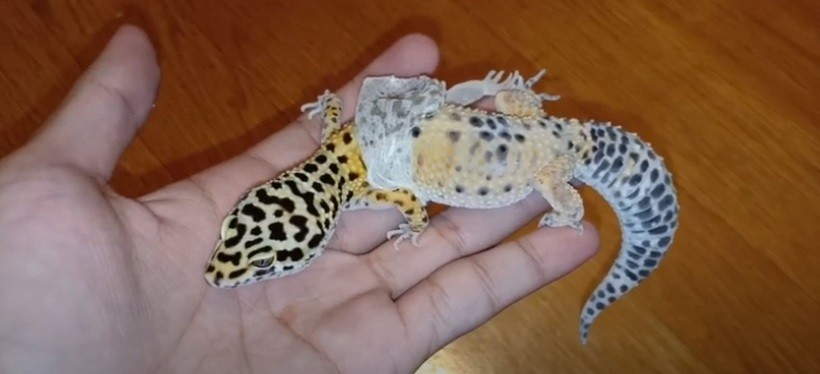
Shedding is a common phenomenon present in almost every living organism, to shed the old skin and get the new one. In reptiles, the leopard process of shedding occurs differently at different intervals.
Normally, it takes 48 hours to complete the shedding process. Shedding occurs at different stages of the life of a leopard. In the early life of a leopard, the normal period of shedding is after one or two weeks, but an adult one this period repeats after four to eight weeks.
When the time of shedding approaches, leopard gecko starts secreting sticky liquid between the outer layer and the layer beneath it; it will help in the shedding of skin easily. Before shedding, the leopard starts rubbing itself with the walls or with something else hard and takes off the skin from toes and eats the skin to get nutrients from it.
Warning signs during leopard gecko shedding
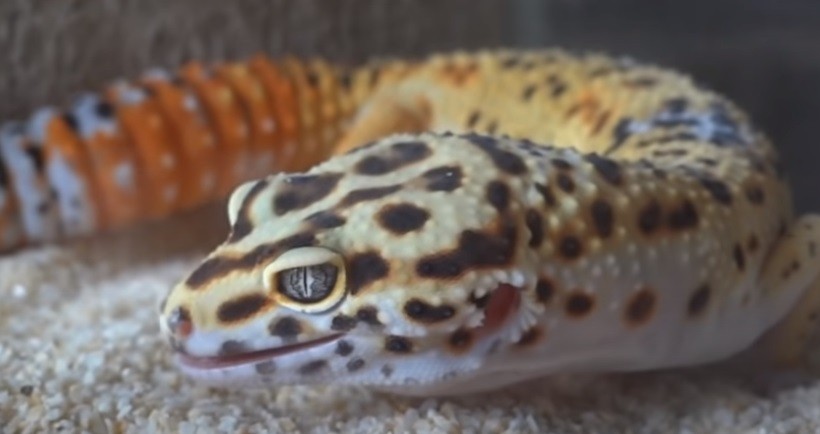
Usually, leopard gecko sheds normally without any problems that are usually present with some other reptiles. But the condition may change and it must be observed from time to time. To be safe watch the leopard after the shed.
-
Retained skin near toes
Leopard gecko has very small feet and toes, so the skin may get stuck to the toes and feet. If it remains unaddressed this leads to loss of digits.
-
Retained skin near eyes
Leopard geckos have some unusual character of having eyelids rather than clear scales which are present in other reptiles. This unusual character allows him to shed his skin covering and surrounding eyelids rather than shedding eye-scale. If the skin does not shed and come cleanly, it may lead to infection or sometimes injury.
The reason behind Leopard gecko shedding problems
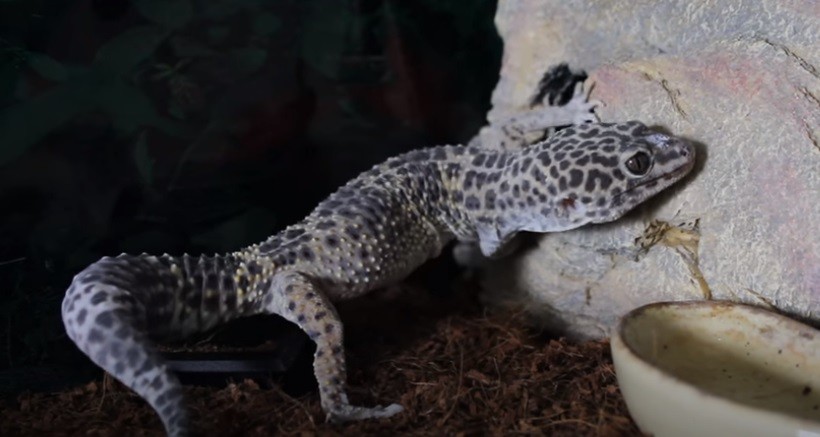
Some breeds of leopard gecko face problems during shedding, which may put the animal in danger and even in some cases lead to death. Certain climatic conditions can lead to the problem during shedding. Problems during shedding arise due to too low temperature, injury, disturbance in level of vitamin A, humidity level disturbance, and various viral infections.
Leopard gecko shedding help
In some cases, the skin stuck to the body of the leopard gecko both in sensitive and in non-sensitive areas. When skin is stuck in some non-sensitive area it is easy to remove it simply by rubbing the body of the leopard without applying greater force.
If rubbing does not go well, simply put the leopard in water and then gently rub the skin, it will remove the stuck skin. In contrast to non-sensitive parts, if the skin is stuck to some sensitive parts like eyelids, toe, and tail it requires greater precaution and care.
The skin over here can remove by rubbing with the damped towel or simply by putting it in water and then rubbing without applying force. If the skin does not come out easily then a visit to a veterinarian is the only solution.
Prevention of leopard gecko shedding issues
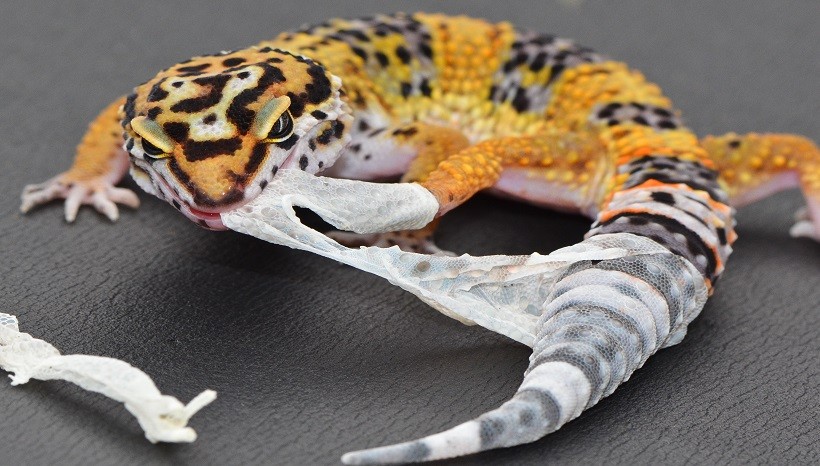
In a natural habitat, leopard geckos are shed without any complication, but in captivity or artificially created habitat, certain complications may arise. These complications can be prevented by different techniques:
-
Gecko should remain hydrated
For normal shedding, the normal temperature for leopards is 90 to 95 degrees Fahrenheit. Higher temperature may lead to de dehydration which in turn poses a serious problem during shedding. Providing a humid hut to gecko enables him to shed properly and create an environment of ease and security.
-
keep gecko free from parasite and stress
Just like dehydration, external parasites like mice and leeches do contribute to the difficult shedding. High-stress level to leopard gecko such as harm from some other also contributes to shedding problems. Fortunately, artificially created natural habitat prevents the gecko from this stress, and in turn, makes shedding less complicated.
Leopard gecko eating their shed
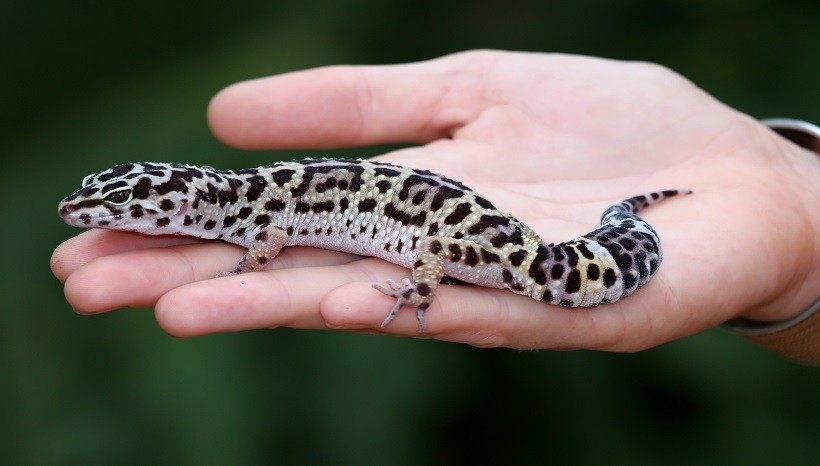
Shedding of old new skin and formation of new skin from the old cells requires a lot of energy in pulling old skin. As without their skin, leopards are porn to attack more so to restore the lost energy during their resting phase, they eat their skin.
Another reason for eating their shed is to cover their traces to protect themselves from the enemies. In addition to all these, leopards care about cleanliness, that’s why they eat their skin.
Conclusion
Leopard gecko shedding method is somewhat different from other reptiles, which is present in lizards and snakes. Leopard gecko shedding generally requires normal humidity for growth, but during shedding little more humidity will prevent it from injuries. A lower level of humidity will cause the toe and if it turns black, it will fall.
Signs of shedding will reappear in adult leopards four to eight weeks, so spray more water to keep the humidity level up. Do this for 24 to 48 hours, until all the skin of the leopard gets shed.
FAQs
1. Why isn’t leopard gecko shedding?
Sometimes, the process of shedding is not visible in leopard geckos. This is because leopards eat their skin by themselves.
2. Why Leopard gecko is not eating after shedding?
Leopard geckos eat their skin to restore energy. That’s why the leopard gecko is not eating after shedding.
3. Why does the leopard gecko keep shedding?
Leopard gecko continues to grow throughout their life. As leopards grow more, the shedding will take place.
If you want to learn more about pets visit us at petshoods
{ "@context": "https://schema.org", "@type": "BlogPosting", "mainEntityOfPage": { "@type": "WebPage", "@id": "https://petshoods.com/leopard-gecko-shedding-complete-guide/" }, "headline": "Leopard Gecko Shedding | A Complete Guide", "description": "Leopard geckos periodically shed off their outer layer, epithelial layer and during this phase, they enter into the resting phase, which ends when new cells begin to form the old layer.", "image": "https://petshoods.com/wp-content/uploads/2021/05/Leopard-Gecko-Shedding.jpg", "author": { "@type": "Person", "name": "jeremy" }, "publisher": { "@type": "Organization", "name": "petshoods", "logo": { "@type": "ImageObject", "url": "https://petshoods.com/wp-content/uploads/2019/02/13925402_1502331219793083_1620090286454245017_n.jpg" } }, "datePublished": "2021-05-03", "dateModified": "2021-07-10" } { "@context": "https://schema.org", "@type": "FAQPage", "mainEntity": [{ "@type": "Question", "name": "Why isn’t leopard gecko shedding?", "acceptedAnswer": { "@type": "Answer", "text": "Sometimes, the process of shedding is not visible in leopard geckos. This is because leopards eat their skin by themselves." } },{ "@type": "Question", "name": "Why Leopard gecko is not eating after shedding?", "acceptedAnswer": { "@type": "Answer", "text": "Leopard geckos eat their skin to restore energy. That’s why the leopard gecko is not eating after shedding." } },{ "@type": "Question", "name": "Why does the leopard gecko keep shedding?", "acceptedAnswer": { "@type": "Answer", "text": "Leopard gecko continues to grow throughout their life. As leopards grow more, the shedding will take place." } }] } { "@context": "https://schema.org/", "@type": "ItemList", "itemListElement": [ { "@type": "ListItem", "position": 1, "name": "Leopard gecko shedding process", "url": "https://petshoods.com/leopard-gecko-shedding-complete-guide/#Leopard_gecko_shedding_process" }, { "@type": "ListItem", "position": 2, "name": "Warning signs during leopard gecko shedding", "url": "https://petshoods.com/leopard-gecko-shedding-complete-guide/#Warning_signs_during_leopard_gecko_shedding" }, { "@type": "ListItem", "position": 3, "name": "The reason behind Leopard gecko shedding problems", "url": "https://petshoods.com/leopard-gecko-shedding-complete-guide/#The_reason_behind_Leopard_gecko_shedding_problems" }, { "@type": "ListItem", "position": 4, "name": "Leopard gecko shedding help", "url": "https://petshoods.com/leopard-gecko-shedding-complete-guide/#Leopard_gecko_shedding_help" }, { "@type": "ListItem", "position": 5, "name": "Prevention of leopard gecko shedding issues", "url": "https://petshoods.com/leopard-gecko-shedding-complete-guide/#Prevention_of_leopard_gecko_shedding_issues" }, { "@type": "ListItem", "position": 6, "name": "Leopard gecko eating their shed", "url": "https://petshoods.com/leopard-gecko-shedding-complete-guide/#Leopard_gecko_eating_their_shed" } ] }